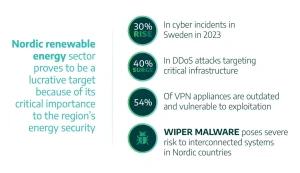Sustainable and Eco-Friendly Mobile Device Practices: A Practical Guide

Let’s be honest. Our phones are like extensions of our hands. We love them. But that constant upgrade cycle, the charger graveyard in the junk drawer, the vague guilt when a device slows down… it adds up. Not just in our wallets, but on the planet.
The good news? You don’t have to become a forest-dwelling hermit to make a difference. Sustainable mobile practices are, honestly, more about mindful habits than drastic life changes. It’s about stretching the life of what you have and making smarter choices when you do need something new. Let’s dive into how you can lighten your digital footprint, one tap at a time.
The Longevity Game: Love the One You’re With
The single most eco-friendly thing you can do is keep your current device for as long as humanly possible. The majority of a phone’s carbon footprint comes from its manufacturing, not its use. So, making it last four years instead of two is a huge win.
Protect That Precious Hardware
A cracked screen or a dying battery are the top reasons people ditch a perfectly good phone. It’s a knee-jerk reaction. But here’s the deal:
- Invest in a good case and screen protector. This isn’t just an accessory; it’s an insurance policy for the planet (and your bank account).
- Battery care is real. Avoid letting your phone drain to 0% or charging it to 100% all the time. Think of it like a comfortable middle zone—between 20% and 80% is the sweet spot. And for goodness sake, take it off the charger overnight once it’s full.
- Get repairs, not replacements. A new battery or screen is far less resource-intensive than a whole new device. Look for reputable local repair shops or consider manufacturer repair programs.
Declutter Your Digital Life
You know that feeling when a cluttered room stresses you out? Your phone feels the same way. A bogged-down operating system is a one-way ticket to frustration and the “this phone is so slow, I need a new one” mindset.
Regularly clean out old photos, unused apps, and cached data. It’s like a spring cleaning for your processor. It can genuinely speed things up and extend the functional life of your device, delaying that upgrade urge.
When You Must Upgrade: The Conscious Consumer’s Playbook
Okay, so the old phone has finally given up the ghost. Or maybe it’s just… time. When you enter the market, your choices matter.
Buying Refurbished: The Smart Secret
This is arguably the best move for the eco-conscious user. A refurbished phone from a certified seller is a device that’s been given a second life. It’s been professionally inspected, repaired if needed, and comes with a warranty. You get a high-quality device for a fraction of the cost and environmental impact. It’s the tech equivalent of buying a beautifully restored vintage piece of furniture instead of chopping down a new tree.
New, But With a Conscience
If you’re set on new, do your homework. Look for manufacturers who are transparent about their sustainable manufacturing processes. Some key things to check for:
- Recycled materials: Are they using recycled plastics, aluminum, or rare earth elements in their construction?
- Repairability scores: Organizations like iFixit tear down devices and rate them on how easy they are to fix. A high score is a very good sign.
- Long-term software support: A phone that gets security and OS updates for five years will stay usable and secure for far longer.
| Brand Consideration | What to Look For |
| Fairphone | Modular design for easy repair, conflict-free minerals. |
| Apple | Growing use of recycled materials, self-service repair program. |
| Samsung | Incorporation of recycled fishing nets into components, repair programs. |
The Daily Grind: Small Habits, Big Impact
Sustainability isn’t just about the big purchases. It’s woven into how we use our tech every single day.
Energy Efficiency Made Simple
Reducing your phone’s energy consumption saves your battery and, on a large scale, reduces the demand on power grids.
- Turn down your screen brightness. It’s the biggest power drain.
- Enable auto-lock after 30 seconds or a minute.
- Turn off Bluetooth, GPS, and Wi-Fi when you’re not actively using them. It’s a tiny habit with a cumulative effect.
- Use Dark Mode wherever possible. On phones with OLED screens, this can significantly reduce power usage.
Dealing with E-Waste the Right Way
That old phone sitting in your drawer? That’s a tiny bundle of e-waste, but it’s also a bundle of valuable, reusable materials. Never, ever throw it in the regular trash.
Here are your options, in order of preference:
- Sell it or trade it in. If it still works, let someone else use it.
- Donate it. Many charities accept old phones for refurbishment.
- Recycle it properly. Take it to a dedicated e-waste recycler, a big-box electronics store, or use the manufacturer’s take-back program. This ensures toxic materials are handled safely and precious metals are recovered.
The Bigger Picture: It’s a Collective Effort
Look, no single one of us will solve the e-waste crisis alone. But our collective choices send a powerful message. They create a market for repairable gadgets. They push manufacturers to design for longevity, not just for the next quarterly report.
Think of it less as a sacrifice and more as a shift in perspective. It’s about valuing the incredible technology we already have and treating it with the respect a complex, resource-heavy product deserves. It’s about breaking free from the relentless upgrade cycle and finding satisfaction in what’s already in your pocket.
Because a sustainable future isn’t just about giant wind turbines and electric cars. It’s also in the palm of your hand.








